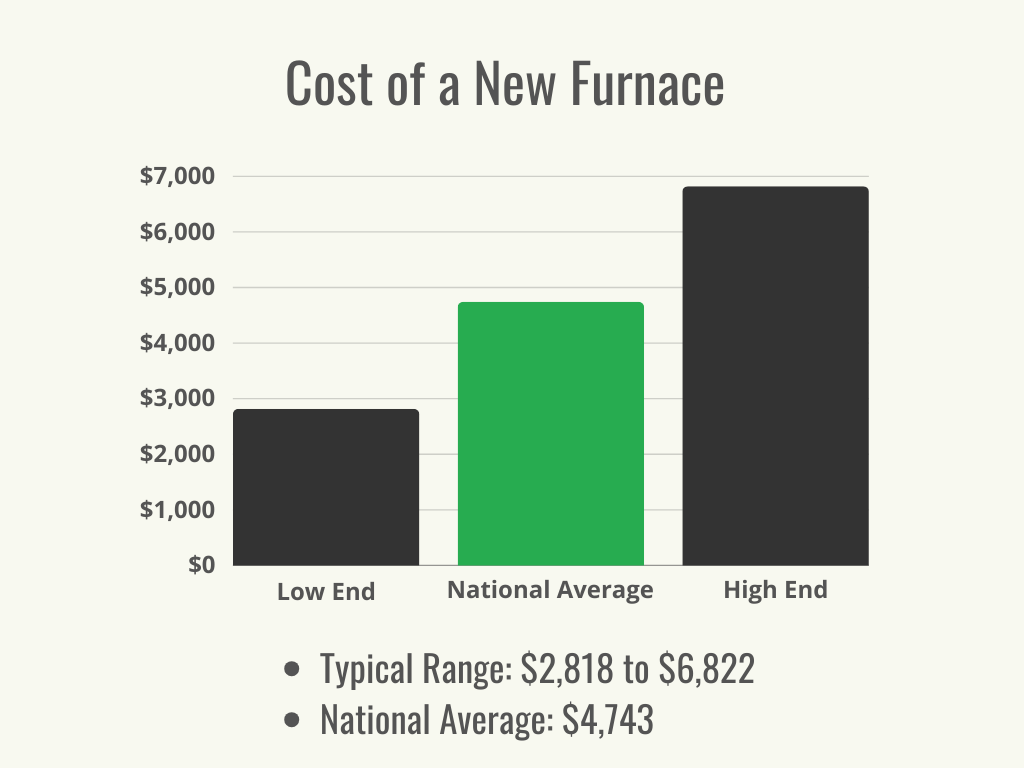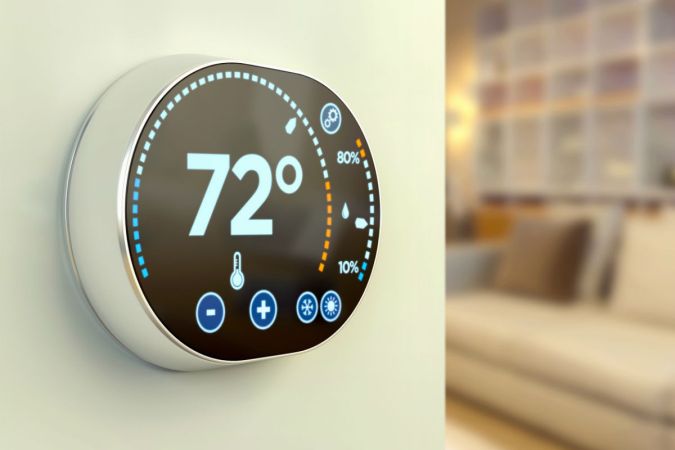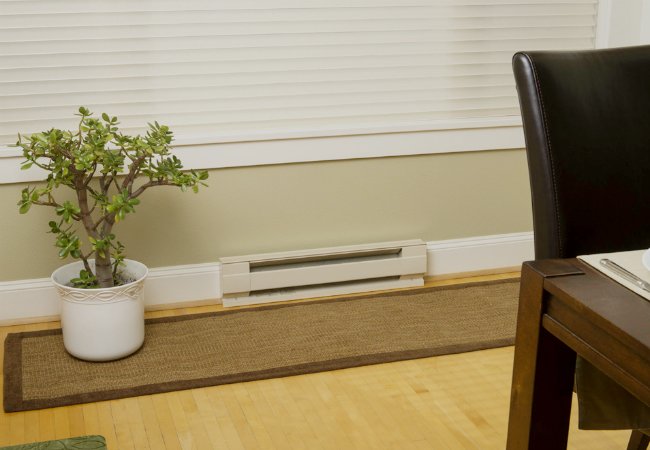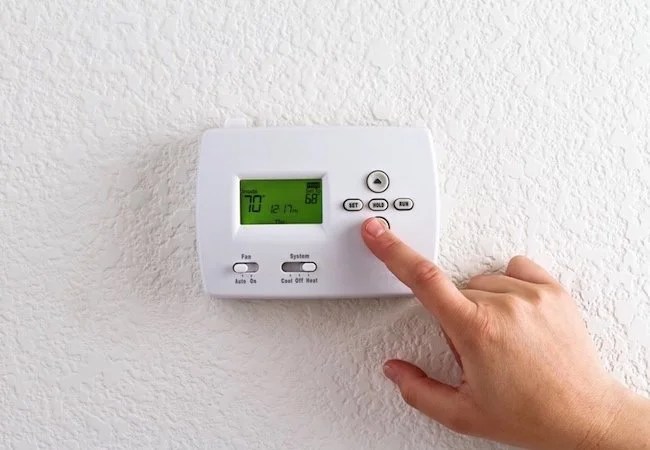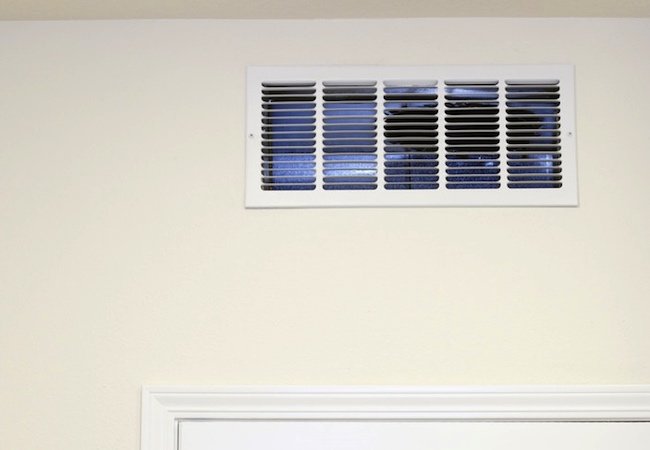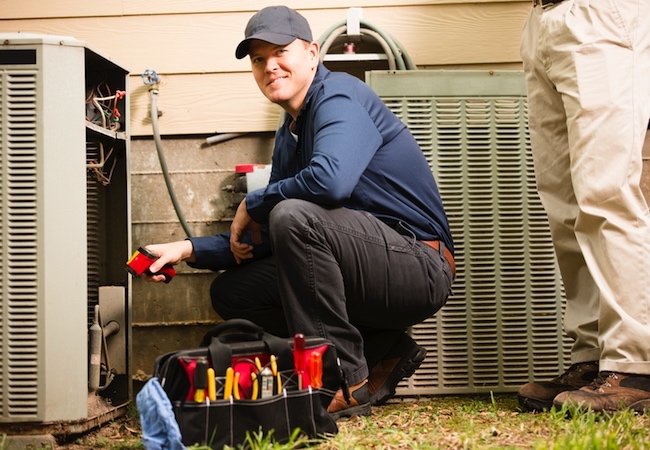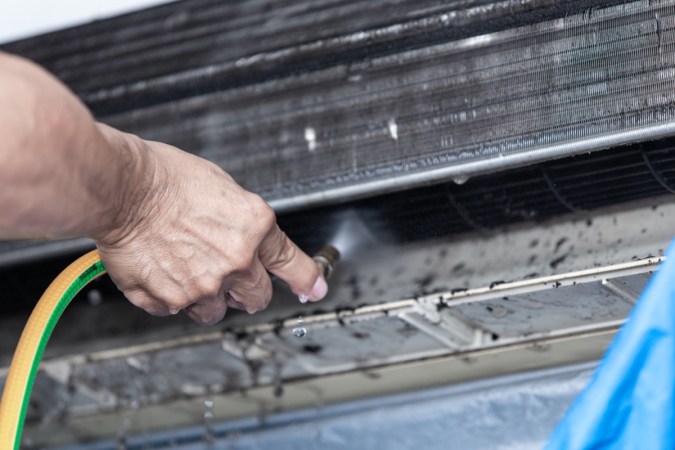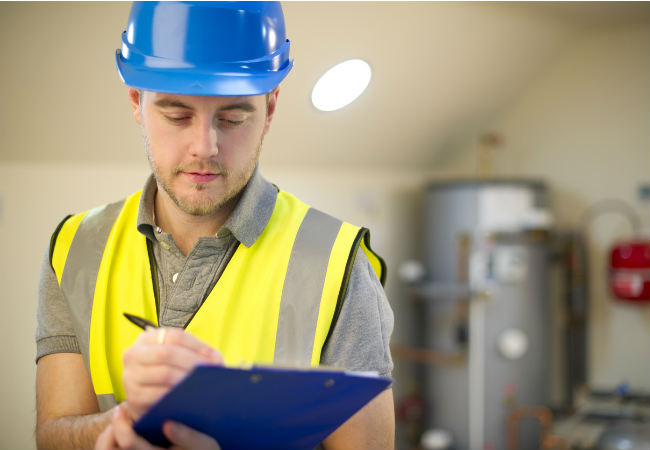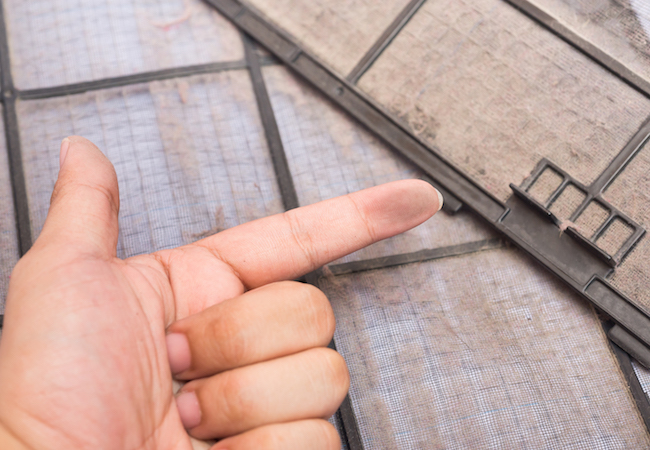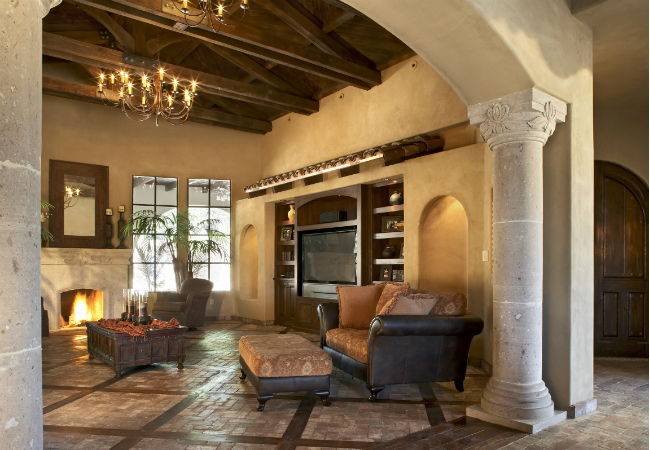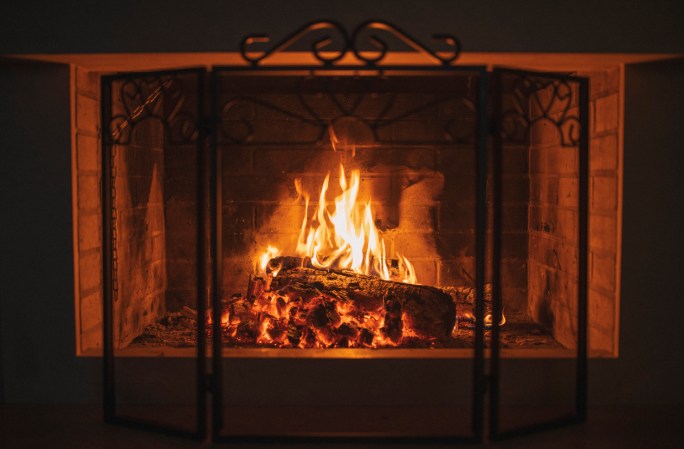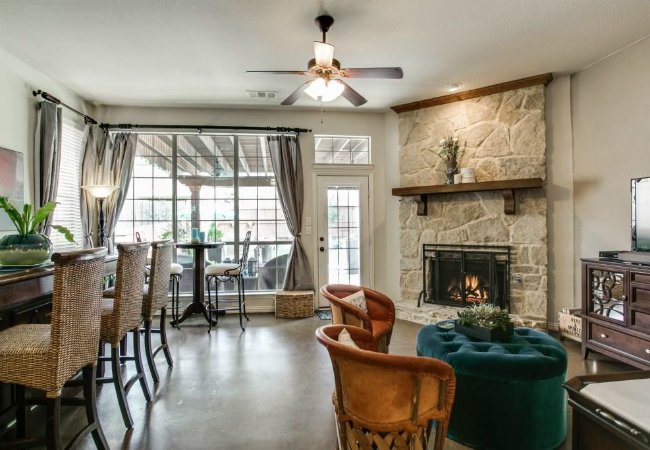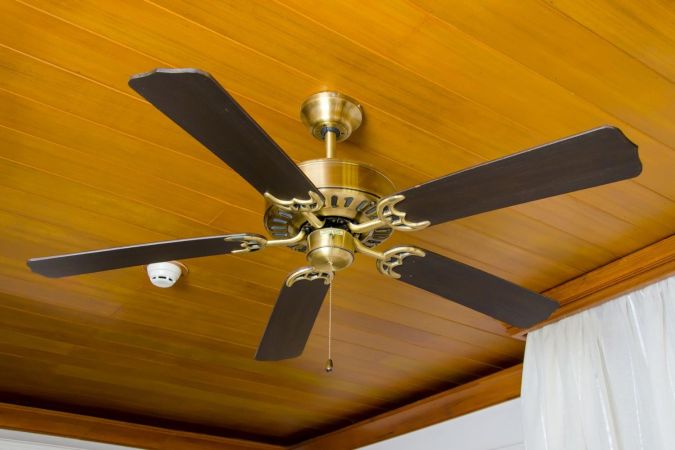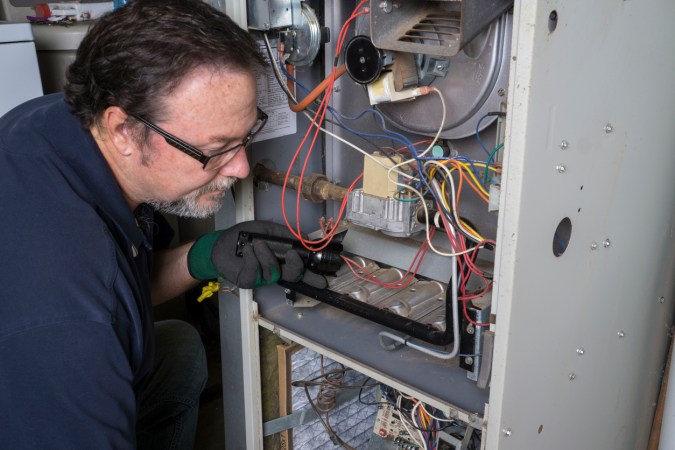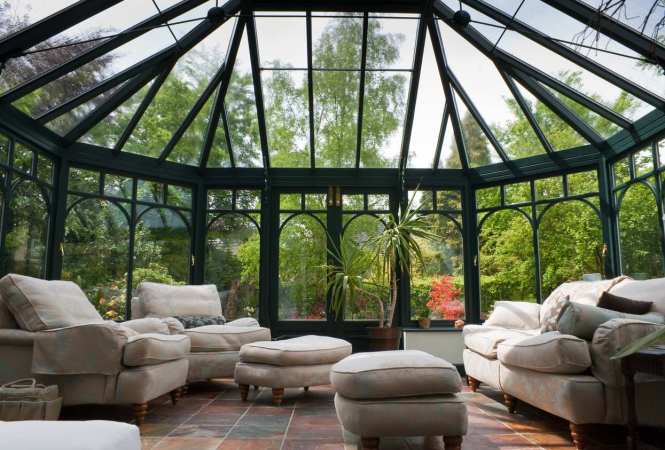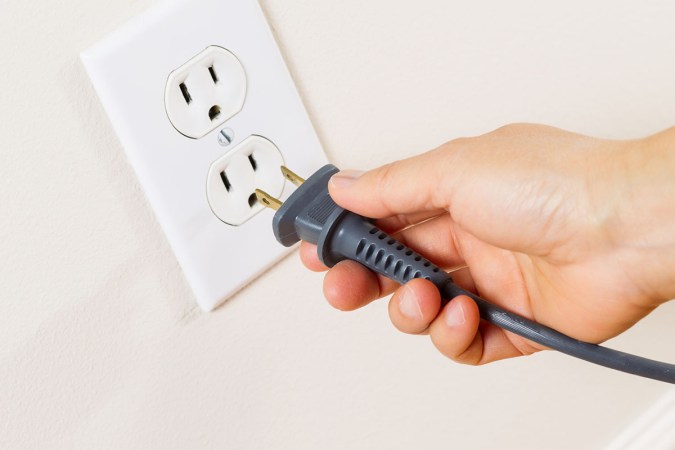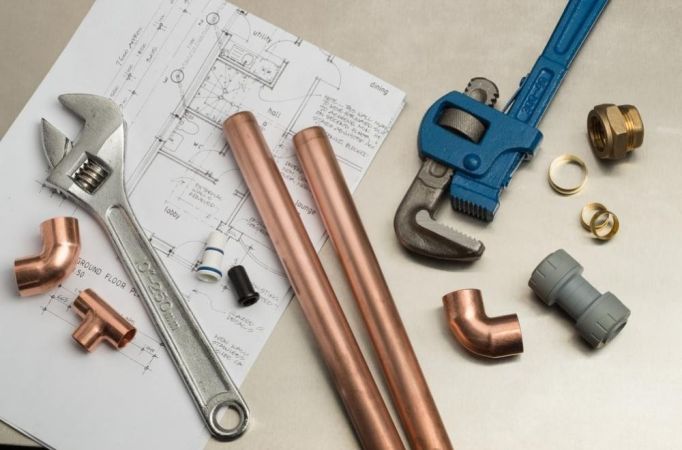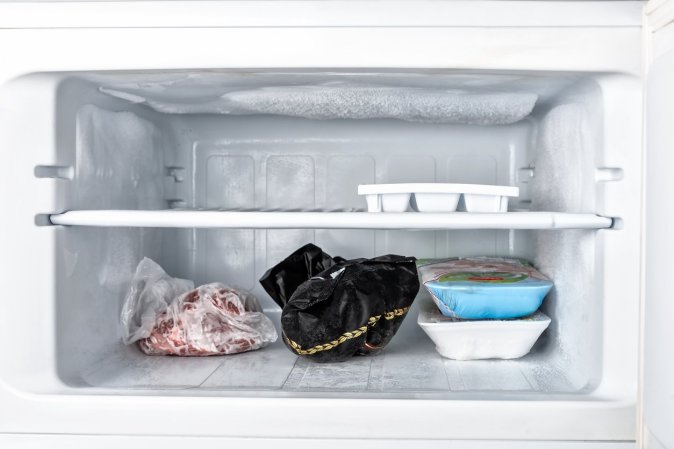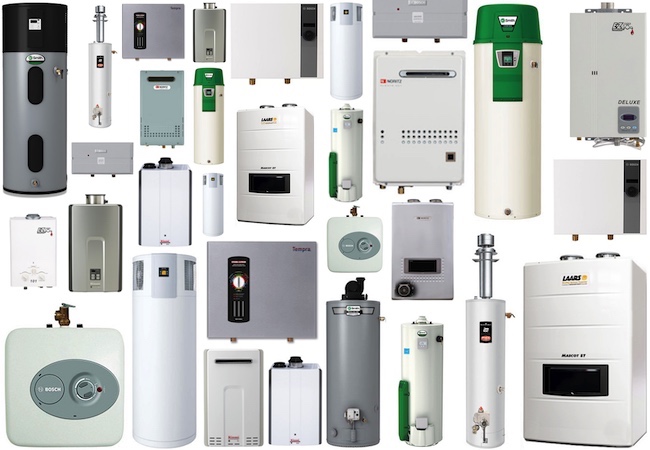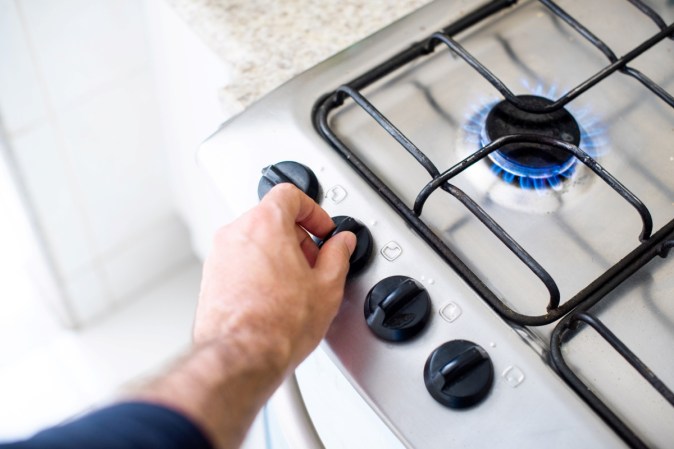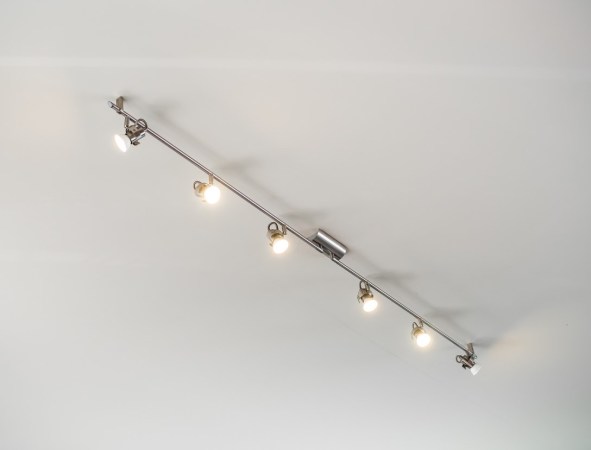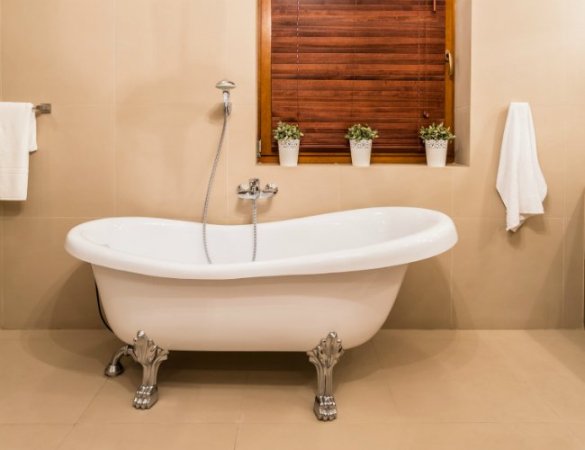We may earn revenue from the products available on this page and participate in affiliate programs. Learn More ›
Highlights
- The typical range for the cost of a new furnace is $2,818 to $6,822 with a national average of $4,743.
- Cost factors for this project include the furnace size, type, efficiency, brand, labor and permits, and geographic location.
- Increased heating bills, uneven heating, unusual noises, mechanical issues, poor energy efficiency, and old age are all signs that a furnace needs to be replaced.
- Furnace replacement can be complicated and even dangerous for those who aren’t experienced. It’s best to leave this project to a professional rather than attempting to DIY.
When homes get chilly, many homeowners use a furnace to heat the air inside to stay warm. Modern furnaces primarily burn natural gas, oil, propane, or electricity. There are several types of furnaces, each with specific characteristics, efficiencies, and costs.
Homeowners who are planning to install a new furnace will want to consider factoring in furnace type, local climate, price, house square footage, and properly or improperly insulated areas to help find the right model for their needs. After finding a new furnace, installation is the next step. Angi averages the cost of a new furnace with installation around $2,818 to $6,822, with the current national average at $4,743. Depending on the type of furnace, the cost varies based on materials, equipment, and labor.
Factors in Calculating New Furnace Costs
Before purchasing a furnace, it’s recommended to consult an HVAC professional for a quote to help identify your needs. How much does a new furnace cost? While the national average cost to replace a furnace is approximately $4,743, that amount can shift according to local areas and specific factors. Based on the size, configuration, and age of a home, HVAC professionals can determine the most economical way to heat a house. Considering location, livable square footage, and energy bills also helps determine what furnace type is the best fit.
Furnace Size
It’s not uncommon for inexperienced homeowners to wonder, “What size furnace do I need?” HVAC professionals assess the size of a home to determine the best furnace type and model for the space. The size of a furnace can also affect the installation cost. Many homes typically require 30 to 60 BTUs per square foot to properly heat a house. For example, a 1,500-square-foot home will require a BTU rating between 45,000 and 75,000, which will cost between $1,800 and $3,000. An HVAC professional can assist homeowners with determining the right size furnace for their home and needs.
| Home Size in Square Feet | Furnace Size in BTUs | Average Cost (Materials and Labor) |
| 1,000 | 30,000 to 50,000 | $1,200 to $2,000 |
| 1,500 | 45,000 to 75,000 | $1,800 to $3,000 |
| 2,000 | 60,000 to 100,000 | $2,400 to $4,000 |
| 2,500 | 75,000 to 125,000 | $3,000 to $5,000 |
| 3,000 | 90,000 to 150,000 | $3,600 to $6,000 |
| 3,500 | 105,000 to 210,000 | $4,200 to $7,000 |
| 4,000 | 120,000 to 240,000 | $4,800 to $8,000 |
| 4,500 | 135,000 to 270,000 | $5,400 to $9,000 |
| 5,000 | 150,000 to 300,000 | $6,000 to $10,000 |
Furnace Type
There are four main kinds of furnaces: electric, oil, natural gas, and propane. The right choice will depend on a home’s specific needs. Generally speaking, electric furnaces are the least costly to install at around $2,000 to $7,000 while propane furnaces can reach up to $14,200. A gas furnace costs $3,800 to $10,000, and oil costs $6,750 to $10,000.
Furnace Efficiency
Some furnaces are more efficient than others, which can have a major impact on running costs. While more efficient units typically cost more initially, replacing an inefficient unit can save homeowners energy costs in the long run. Furnace efficiency is determined by “annual fuel utilization efficiency,” or AFUE ratings. An AFUE of at least 96 percent is considered high efficiency.
Furnace Brand
There are quite a few furnace brands on the market offering units of all kinds. Coleman is best known for electric furnaces, and its units cost about $2,500 on average. Goodman and Carrier offer gas furnaces from $3,200 to $7,320 respectively. At the high end of the scale, oil-run furnaces from Trane cost about $8,650, and from Lennox, $11,190.
| Furnace Brand | Average Cost (Materials and Labor) |
| Carrier | $7,320 |
| Coleman | $2,500 |
| Goodman | $3,200 |
| Lennox | $11,190 |
| Trane | $8,650 |
Labor and Permits
Most homeowners pay between $75 to $100 per hour for a licensed installer to put in a new furnace. Installation can take 4 to 18 hours depending on whether it is necessary to repair or install new ductwork during the process. Prices vary according to city, cost of living, furnace efficiency, and included warranties, among other local considerations. It’s important to get the proper permits before the job starts. A permit costs between $400 and $1,500, which varies according to location. Some companies include an inspection fee to ensure the equipment safely and properly functions.
Geographic Location
Geographic location can play a role in how much a homeowner pays to have a new furnace installed. For example, in Boston, Massachusetts, the average furnace replacement cost is between $2,750 to $7,400, while in Portland, Oregon, costs cap out at $5,950.
| City | Average Cost (Materials and Labor) |
| Atlanta, Georgia | $2,250 to $6,000 |
| Boston, Massachusetts | $2,750 to $7,400 |
| Denver, Colorado | $2,150 to $5,850 |
| Houston, Texas | $2,500 to $6,800 |
| Indianapolis, Indiana | $2,080 to $5,600 |
| Los Angeles, California | $2,150 to $5,850 |
| Portland, Oregon | $2,200 to $5,950 |
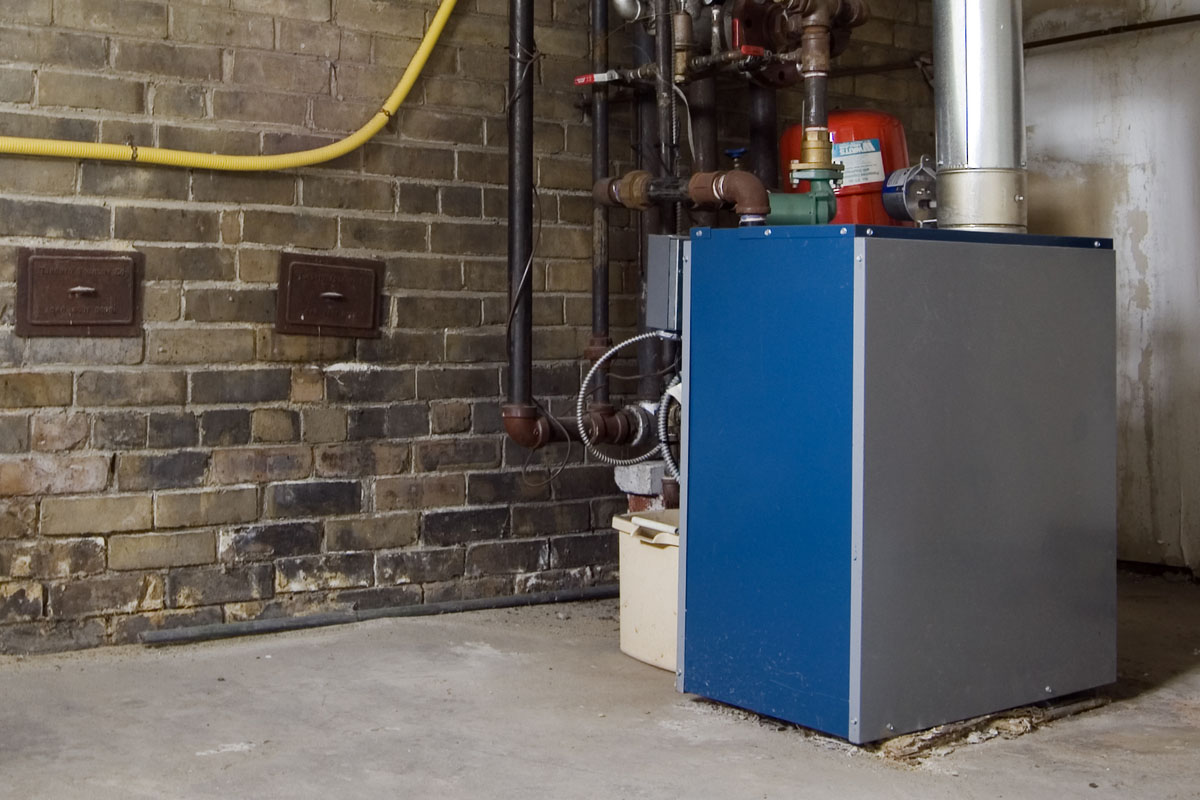
Additional Costs and Considerations
While homeowners expect to pay the cost of a new furnace and its installation, there are other costs associated with the installation process that may not be included if they consult a furnace replacement cost estimator. There may be additional charges for extra parts or additional labor a hired professional may need to complete the project.
Existing Furnace Removal
If the new furnace being installed is replacing an old one, there may be a removal fee for the existing unit. Professionals typically charge between $60 and $330 for this, or homeowners can find a local recycling plant and dispose of the furnace themselves for free.
Gas or Electrical Work
Relocating a furnace to a new spot in the home can cost between $2,000 and $8,000. If the unit is being moved only a few feet away from the old one during a basement renovation, it will only be necessary to add a few feet of ductwork. If moving the entire system is necessary, this can require extensive construction to add ductwork, drywall, and new electrical circuits to a new space.
A gas furnace needs air to burn fuel safely. To accommodate this, ventilation or a gas line may need to be added when a new gas furnace is installed. Gas line additions can cost anywhere between $500 and $2,000, plus the cost of a gas line permit at $50 to $200.
Drywall Repairs
In a renovation situation where more ductwork or circuits are being added to set up a new furnace, there will likely be a need for drywall to repair and seal any changes to the wall. Drywall repairs typically cost between $150 and $325 and can be as simple as patching up a spot on the wall or closing up more extensive damage. Some contractors factor hole size or location into their repair costs.
Fuel Source Conversion
When converting from one type of furnace to another with a different fuel source, it’s a good idea to add between $2,000 and $10,000 to the budget in addition to installation fees. This cost will depend on the current setup and whether it will be necessary to repair or install new ductwork, which includes the proper venting.
Ductwork Installation or Replacement
Most furnaces cannot function properly if the ductwork, vents, or other filters are not adjusted correctly for the new furnace or the home. This new ductwork costs an average between $2,000 to $5,000.
AC Installation or Replacement
If the home has an air conditioning unit that was installed at the same time as the furnace, it’s likely both will need to be replaced around the same time. In most cases, installing a new furnace and AC costs less than these projects would cost individually. AC installation costs range from $4,000 to $8,000.
Maintenance and Repairs
While there will hopefully be some time between installation and the need for furnace maintenance costs, it’s important to budget for these needs ahead of time. It’s recommended to schedule annual maintenance to keep the furnace running efficiently, and furnace service costs between $60 and $550 per visit. Furnace cleaning costs $70 to $300. In the unfortunate event of a breakdown, furnace repair cost ranges from $150 to $2,000 depending on the issue.
Tax Credit
Some furnace upgrades may be eligible for a tax credit. For example, homeowners who install Energy Star–rated gas and oil furnaces between January 1, 2023, and December 31, 2032, can claim 30 percent of the project cost, or a maximum of $600.
Warranty Coverage
Home warranties typically cover HVAC and other systems, even for normal wear and tear. For this reason, homeowners who have one of the best home warranties from providers such as American Home Shield or AFC Home Club may find that some or all of their furnace replacement cost is covered under their policy. It’s worth noting that furnaces that have not been well maintained or that have been worked on by someone who is not a professional may not be covered.
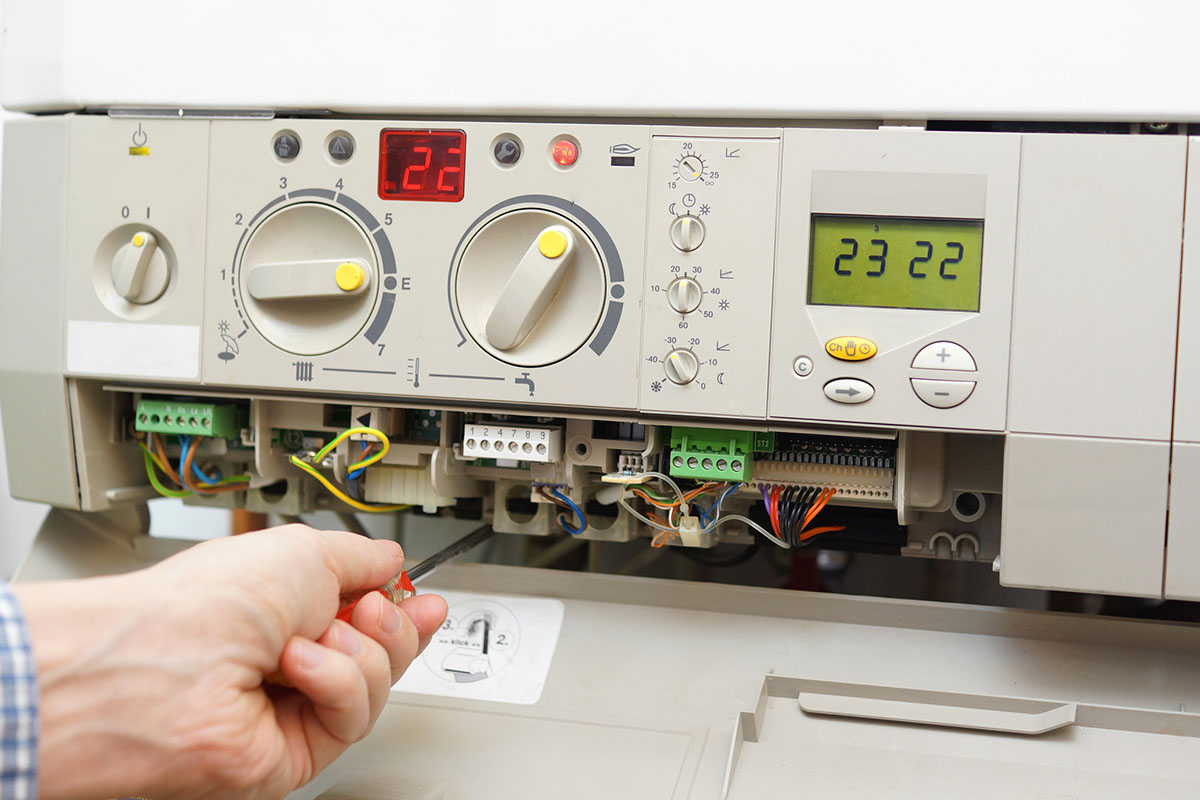
New Furnace Cost by Type
The cost of a furnace is greatly dependent on the furnace type. The average cost of replacing a furnace runs between $2,000 and $7,000 based on the model that best meets your needs. There are gas, electric, and oil versions, each using varying amounts of fuel that can affect the quality of home heating.
| Furnace Type | Average Cost (Materials and Labor) |
| Electric | $2,000 to $7,000 |
| Natural gas | $3,800 to $10,000 |
| Oil | $6,750 $10,000 |
| Propane | $3,700 to $14,200 |
Electric
While an electric home furnace costs more to operate, it also has relatively cheaper installation prices. An electric furnace is highly efficient and relatively low maintenance when it comes to function. However, electric furnaces heat more slowly than gas furnaces, and it takes more money to run an electric furnace each month. An electric furnace costs between $2,000 and $7,000 to install.
Natural Gas
Natural gas is a relatively inexpensive fuel source that can efficiently and quickly heat a home. Furnaces that run on natural gas are best suited for northern climates inside well-insulated houses. Installing one of the best gas furnaces can cost between $3,800 and $10,000, depending on the brand and whether you’re converting from an electric unit. Since a gas unit requires ductwork, there might be additional costs if a contractor needs to make adjustments to the existing ductwork to accommodate the new furnace.
Oil
As oil prices rose in the U.S. years ago, many homeowners sought to convert to natural gas furnaces to save money. But for those torn between gas vs. oil heating, it’s worth noting that oil is more environmentally friendly. While it requires storage tanks, this type of furnace makes it possible to purchase large amounts of fuel at once and get rid of a monthly heating bill. Oil furnace cost runs around $6,750 to $10,000.
Propane
Propane furnaces can be installed above ground for around $700 or buried underground for an average of $8,150. Some of the pros of a propane furnace are relatively low fire risk and less expensive running costs. However, cons include decreased efficiency compared with other units and higher initial equipment costs. The overall range for propane furnace costs is $3,700 to $14,200.
Do I need a new furnace?
During cold-weather seasons, a broken furnace is less than convenient. When you factor in the potential discomfort and hazards of a home without heat, it becomes even more important for a furnace to work properly. It’s much better to be proactive and notice signs you need a new furnace instead of waiting till the heater quits working during a cold snap. There are a few key factors to consider when replacing a furnace, including high heating bills, safety, energy efficiency, and flooding.
Increased Heating Bills
A furnace is one of the biggest energy consumers in the home, and its efficiency can directly affect monthly energy bills. For homeowners who find that they are paying way more than last year and the rates haven’t increased, this may be a sign to hire for a furnace inspection, and ignoring this problem is a heating mistake that will cost you money in the long run. Newer and well-maintained appliances perform at peak efficiency levels, while older models don’t fare as well.
Uneven Heating
When a furnace is working as it should, every room of the home will feel sufficiently warm when the heat is on. If some parts of the house feel cooler than others, it’s likely that something is wrong with the furnace. Whether the furnace is blowing cold air or simply isn’t pushing hot air into all rooms, a furnace technician will be able to tell if the problem can be remedied by a repair or if the unit needs to be replaced.
Unusual Noises
A noisy furnace is probably not functioning as it should be. If the furnace is making audible humming, buzzing, rattling, banging, or popping noises, it’s a good idea to have it inspected by a professional.
Mechanical Issues
A malfunctioning furnace can be a health hazard. A faulty heating system can spread carbon monoxide throughout your home, and exposure can be deadly. A broken furnace also allows the spread of dust, mold, or other compromised air, which can exacerbate asthma and allergic reactions. A new furnace can help clean the air, which may alleviate some health concerns.
Poor Energy Efficiency
A furnace that is too large often cycles on and off more frequently, using more energy to power and continually heat it. To avoid waste, it may be worth looking into replacing an older furnace with a newer energy-efficient model. The size of a unit can directly affect how much energy it needs to run. For a furnace to be more efficient, homeowners can lower the thermostat by a few degrees, cover the windows at night or in the summer, and seal off leaks or insulate ducts to reduce potential heat loss.
Aging Furnace
Furnaces are not meant to last forever. In fact, the average lifespan of a furnace is between 15 and 30 years. If the furnace is approaching the 20-year mark as well as showing additional signs of wear, it’s probably a good idea to replace the furnace before it fails.
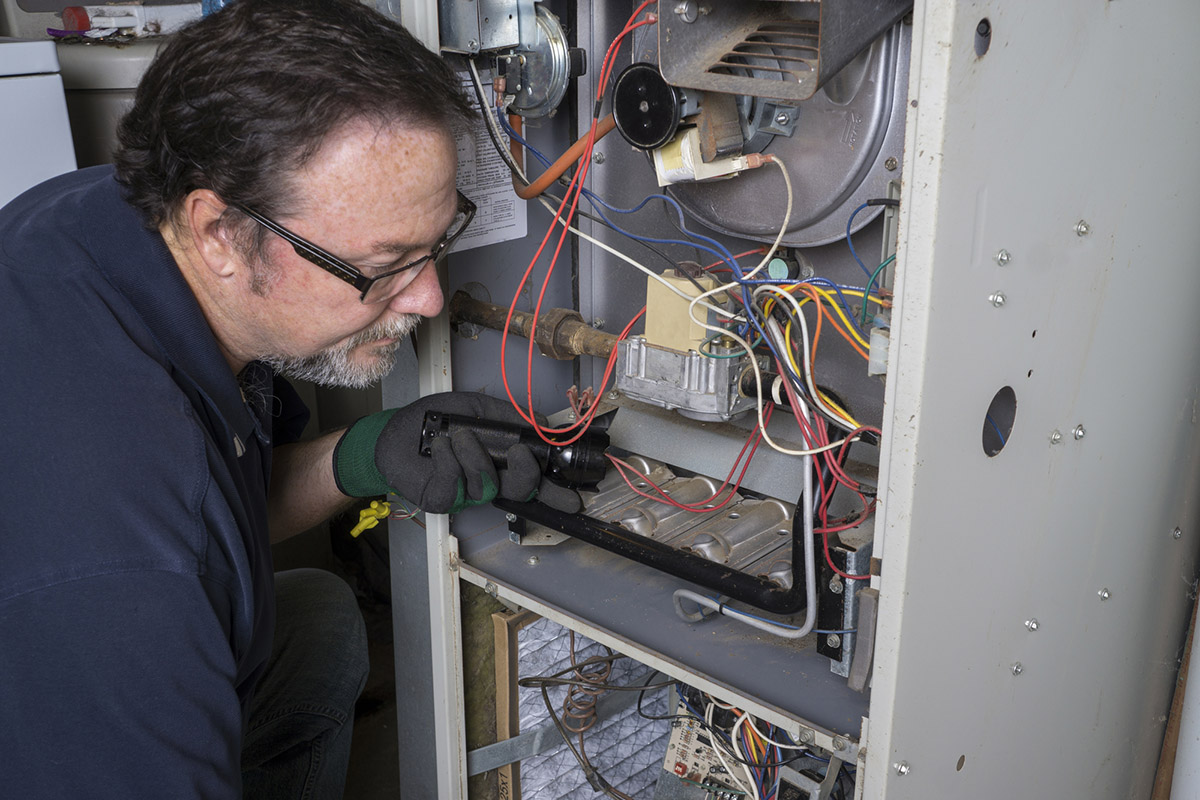
Furnace Installation: DIY vs. Hiring a Professional
After purchasing a new furnace, another important consideration is the cost to hire an installation service. Hiring a reputable, highly trained contractor is crucial to install a furnace correctly. Homeowners who take on this project themselves risk making missteps that lead to increased monetary and energy costs in the long run since a contractor will likely need to be hired to fix the issues anyway.
Homeowners who are typically pretty handy and think they can tackle this installation to save money will first want to understand the complexities of this process to ensure a safe and successful hookup. Since there’s a lot of technical wiring involved, however, it is advised to hire a trained HVAC professional to get it done safely and correctly. To complete this installation process, you need to be knowledgeable about getting the proper permits, removing the existing furnace, and disconnecting the gas line safely (if applicable) before setting up the new model. Leaks in a furnace can occur during installation and, without experience, it’s difficult to fix the issue and prevent further damage. While the cost of a new furnace can be a significant amount, it can be considered an investment since it should last for 15 to 30 years.
How to Save Money on New Furnace Cost
It’s unlikely that a furnace will last forever, so at some point, it will be necessary to replace the current heating system. Furnace installation costs are not insignificant, but these expenses are set by trained professionals who’ll make sure the job is completed safely and to code. While these up-front costs may seem substantial, here are some helpful ways to save money without sacrificing a quality installation.
- Keep an eye out for discounts. Look into current deals, sales, coupons, promotions, and rebates from manufacturers and installers. Also check partner offers on a new unit through warehouse club memberships.
- Start saving now. Set money aside weekly for major home expenses. This way, when there’s an incident, you’ve built up a tidy nest egg to cover the cost.
- Look into financing options. Apply for a loan through your local bank or credit union.
- Research tax credits. Find out if there are any tax incentives or special rebates from federal, state, or local governments and utility providers.
- Shop around. Ask for pricing quotes from several qualified installation companies before hiring. Also check to see if the HVAC installers you’re considering offer free quotes.
If paying for a new furnace out of pocket isn’t immediately feasible, it’s a good idea to look into financing options that could help. Those who have emergency savings may want to dip into these funds if the furnace replacement is urgent. Otherwise, it’s often possible to get a personal loan or one of the best home improvement loans relatively quickly as long as you have good credit. If the installation is expected to be very pricey or is part of a larger renovation project, it may make sense to utilize home equity by applying for one of the best home equity loans from lenders such as U.S. Bank or Flagstar. The best HELOC lenders, such as Bank of America, can also be good options.
Questions to Ask About the Furnace Installation
Installing a new furnace can be a complicated process, so it is important to ask a local professional the right questions to ease any concerns. Here are some recommended questions to ask at different stages of the furnace installation process.
Before installing a new furnace:
- How large should a furnace be, considering the size of my home?
- How is this unit’s efficiency measured?
- What types and brands of furnaces are available?
- What fuel type works best for my home and local climate?
- How long will this model last?
- How much will installation cost, and how much is a quote?
- Do you have a detailed cost list or proposal that outlines the entire scope of the installation job?
- How do local permits and inspection fees affect the total cost?
- What is your equipment markup?
- Can you install other systems, including a thermostat?
During the installation process, if there is a problem:
- What are the next steps to fix this?
- What additional costs or extra time are required to fix this?
After the furnace is installed:
- Is regular maintenance necessary?
- To whom do I address payment?
- Where can I leave a review or testimonial?
FAQs
Purchasing a new furnace and hiring an installation service can be a confusing process, especially for those who have never done so before. These are the answers to a few common questions to help make this process easier.
Q. How much is a new furnace for a 2,000-square-foot home?
To calculate the correctly sized furnace for a home, the first step is to find out the home’s square footage. From there, it’s possible to figure out the average heating capacity the furnace needs to properly warm up the space. For a 2,000-square-foot home, it’ll cost around $3,300 for a new furnace based on total square footage and BTU rating.
Q. How hard is it to replace a furnace?
Installing a replacement furnace is a complicated process, and it is often recommended to leave this job to trained professionals who know how to complete the job properly and efficiently. This process takes several hours to finish, and even longer if there are complications involving ductwork, electrical, or gas line modifications needed to match the new equipment. An electric furnace has a straightforward installation process since it doesn’t need to be vented, and it’s easier to replace than a gas furnace.
Q. Should I replace a 40-year-old furnace?
If you’re tempted to search “How long does a furnace last?” on Google before deciding if it’s time to replace your existing unit, it’s important to note that a typical lifespan for a furnace is 15 to 25 years. So, if the furnace is any older than that (such as a 40-year-old furnace), it is advised to look into updating the current unit. Other signs that your furnace needs to be replaced include high energy bills, air leaks, broken thermostats, clogged filters, odd sounds, and unfinished cycle lengths.
Q. How long does a new furnace last?
The average furnace lasts 15 to 30 years.
Sources: Angi, HomeAdvisor, HomeGuide, Forbes, Energy Star
